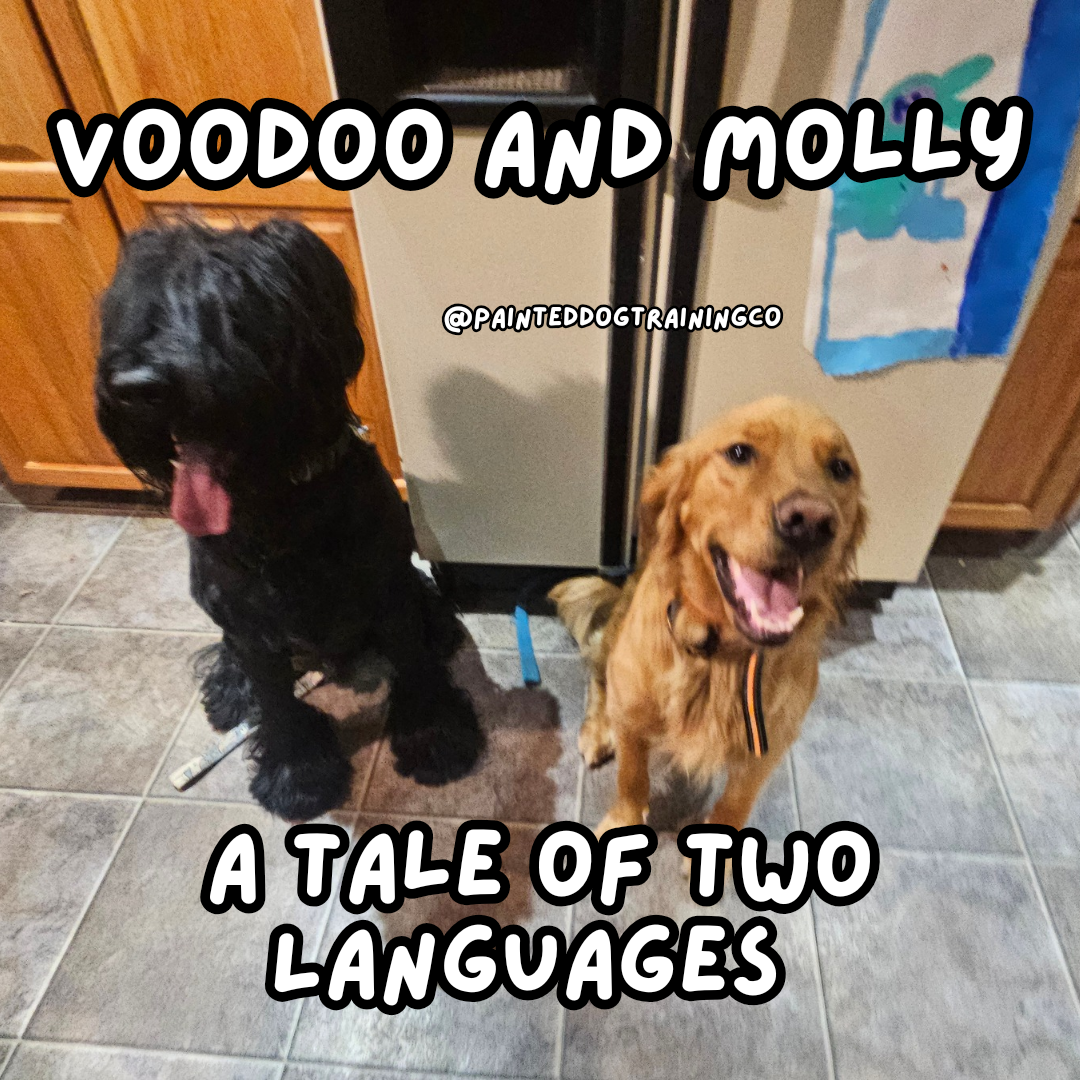Voodoo the briard and Molly the Golden Retriever are learning that friendship can blossom even when you speak different languages – in their case, dog languages! While their budding bond is mostly filled with hanging out and shared naps, a few minor misunderstandings have arisen. Let’s delve into the fascinating world of canine communication to understand their challenges and gain understanding on how to help them reduce conflict.
Lost in Translation: Breed Differences
Briards like Voodoo were bred to be independent herding guardians. They’re known for their intelligence, protectiveness, and sometimes aloof nature. Their communication style tends to be subtle, relying on body posture and eye contact more than exuberant displays. Golden Retrievers, on the other hand, are renowned for their friendly, outgoing personalities and eagerness to please. Molly communicates with enthusiastic body language, playful barks and growls, and a wagging tail that could sweep you off your feet.
These differences can lead to confusion. Voodoo’s subtle cues might be missed by the more boisterous Molly. Similarly, Molly’s exuberance can be overwhelming to the more reserved Voodoo at times. Additionally, Voodoo has moved into Molly’s home – at times, she is ever so slightly territorial.
Play Styles: From Gentle to Rowdy
Play styles also vary between breeds. Briards often enjoy more strategic games, like herding or chasing, while Golden Retrievers are happy to engage in just about anything, from fetch to tug-of-war. Molly’s play style is sometimes too exciting for Voodoo, and sometimes she doesn’t quite understand his unique invitations to play, which can lead to minor disagreements. It’s never more than a quick warning to back off, and is not worrying.
Building Bridges: Fostering Friendship
We’re doing a variety of things to quickly reduce conflict:
* Confidence Building for Voodoo: Since Voodoo is less confident around Molly, we’re working on his confidence in her presence. This is done through things like training and games when she is nearby. Lots of good, fun things happen when Molly is around.
* Respecting Molly’s Space: While encouraging interaction, we make sure Molly has the option to disengage if Voodoo’s herdy-guardy play is getting to be annoying.
* Supervised Play: Molly and Voodoo are not currently being left alone together, as sometimes we still need to intervene and show them what to do instead. Until conflict is near nonexistent, there’s no reason they need to be together when no one is around. Most of the time, they’re together and allowed to play.
* Parallel Walks: Walking dogs together is a common, effective way to get them comfortable around each other. In Voodoo and Molly’s case, they are both very reliably trained and can be loose on 10 acres. Being velcro dogs, they never go far. Both are happy to ignore each other and go do their own thing, so we allow them to do that instead. With this much room, they don’t have to engage but can be having fun around each other. This is not recommended for most dogs.
* Positive Reinforcement: So many fun, happy things happen when they’re around each other, and especially when they’re positively interacting. We want to change how they see each other and definitely do not want it to be negatively changed. Lots of positive reinforcement can make all the difference.
Patience is Key
Remember, building a strong friendship takes time. With patience, understanding, and a little guidance, Voodoo and Molly will soon be fluent in each other’s languages, communicating effectively and enjoying a beautiful friendship filled with playful adventures and cozy companionship. Already, we’re seeing things like Voodoo vocalizing more to try to engage with her, as she’s very vocal during play where he normally is not. Both are trying things to find the appropriate actions, and that’s what we want to see.
Voodoo and Molly: A Tale of Two Languages




